Fantasy fails and you no longer know what to do with the child? In this article you will find some unusual and interesting ideas for the application, which will suit both kids and older children.
Contents
- Paper application
- Influence of application for the development of the child
- Materials for the paper application
- Paper and cardboard for the application
- Adhesive and other tools for the application
- Additional materials and techniques for the application
- Application ideas from the circles
- Ideas for the application of napkins
- Ideas for the applicationof buttons
- Ideas for appliqués of cereals
- Applications from natural material
- VIDEO: Educators and parents - applications for children
AppliqueThis is a long-time fun not only for many children, but even for adults. After all, sticking something on the base or sewing is very interesting. And now there are many different materials that can be successfully applied in applications and do wonderful and unusual work.
Often the works use all sorts of elements that are easy to find in any house or even on the street: pebbles, shells, beads, beads, pieces of plain or lacy fabric, buttons and many other various things.
Plots for creating applications can be very diverse:
- it can be the characters of your favorite cartoons
- favorite animals or toys
- wildlife
- different holidays
Paper application
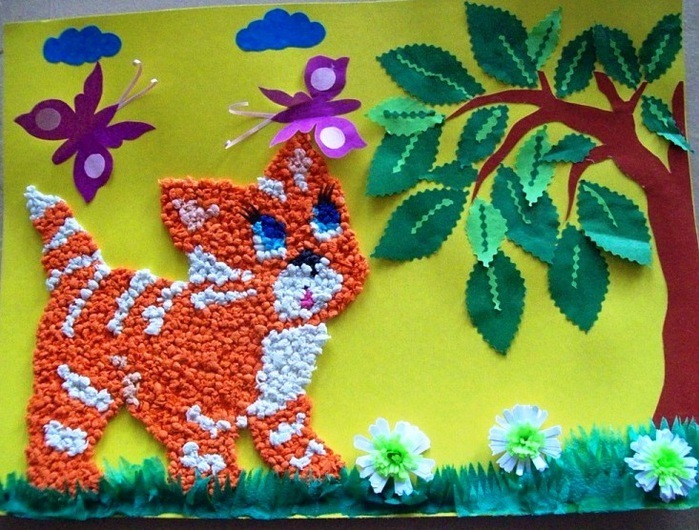 Application - Kitty on a clearing
Application - Kitty on a clearing Most often when it comes to applications with children, there isin view of paper application. And this is not just so, because the paper can be found in any stationery store, and the variety of its species is quite large.
- The paper is bright, colorful, it very attracts the child to work with it.
- It can be of different textures and forms.
- It is easy to roll, fold, cut out any shape and paste it to a paper base.
- Well, the most important thing is that the paper isenvironmentally friendly and therefore safe material, that's why it's great for practicing creativity even with the youngest children.
Effect of using the application for the development of the child
Thanks to the application, children receive the following skills:
- learns toCoordination of movements
- develops small hand motility
- learns the basics of the composition
- learns colors and how they can be combined
- learns different invoices
- develops observation and imagination
- learns to fantasize
An application helps the development of thinking processes in the child, he learns to analyze and compare real objects and animalswith the handicrafts made with you. The child, working with the application, makes a whole from several parts and learns to divide the whole into components.
 Application of pasta and beans
Application of pasta and beans - As with any other kind of creativity, the application helps the development of speech, when adults discuss with the child the creations they create, explain what they do and why, which eventually turns out. Working together, children engage in dialogue and improve their erudition
- And of course, this is a good option for spending time together with a child who will help you to establish and strengthen emotional contact
- Below we offer you ideas for crafts in the technique of application. The proposed examples of varying complexity require a different amount of time to be created. Therefore, choose work on the age of the child and help him in their creation
- It will be good if you offer the kid to change the composition, come up with something different - this will help him in developing his imagination and creative abilities.
. Materials for paper applications
. To work beautifully,cut out the necessary elements and also gently stick them on the base, but the beauty also depends on the selected materials.
The assortment of paper in stores is very large, but not all of it is suitable for application, and you can make mistakes in choosing a glue. Take note of the recommendations for selecting the materials listed below.
 Materials for application
Materials for application Paper and cardboard for application
It is better to choose paper not very thin, but also very thick, too, will not work. You can take both matte paper, and glossy, it can be textured or smooth.
Choose a paper that suits your idea. But pay attention to the fact that glossy paper will show traces of glue and fingerprints, so it is better to give preference to matte paper, then the work will look neater.
- To begin with, try working with with colored paper , which is produced specifically for the printer. It is in every store and can be of different colors. It is quite good in density and matte
- More experienced creators can use coated paper , it is also available in sets of different colors. This paper is glossy and dense enough
- Textured paper will help to emphasize any details of the craft. Choose a paper of suitable density and desired texture, for example, with some embossing or with the effect of velvet
- There is still foil paper , with it you can make very believable windows in your craft, or water. Such paper is usually produced in medium density, which is suitable for application. Sometimes even on such paper there is the effect of holography
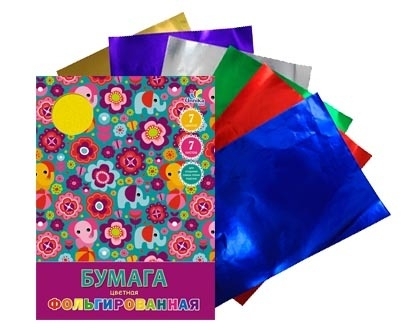 Foamed paper
Foamed paper - is a very convenient form of paper for application, self-adhesive paper, however it still needs to be looked for, and the color palette is very poor. Such a paper is convenient because it does not require glue to glue it, so it perfectly fits perfectly on the
- base. The drawing paper is good for creating templates.it is dense and its edges are not jammed
- Cardboard is well used as a basis of work, it can be both white and color. Due to its density, it will not wrinkle when attaching parts to it. Cardboard also choose the most suitable for your idea, it can be both matte and glossy.
. Glue and other tools for application.
. To create an application, the necessary details are cut from the paper and glued to the cardboard-base. Cut the parts along the outer edge with scissors, and in order to cut the holes inside it is better to use a clerical knife.
The adhesive also needs to be selected correctly, so that it does not cause deformation of the paper and the article does not lose its appearance.
- Scissors choose good, they should cut the paper well and be sharp. They should be comfortable to hold the child. It's better if you have scissors with straight blades to cut the parts in a straight line, and second ones with rounded blades that are easy to cut along the curved path of the
- . In order to cut something inside the part, you will need the clerical knife .The metal ruler is useful for cutting straight lines with the
- knife. You will need the substrate for cutting the with a stationery knife, it will protect your furniture from scratches.
- In the stores you can find shaped hole pits , with their help from color orwhite paper you can make different figures with one click on it. The variety of types of punchers is quite large, they differ in size and shape. With their help, you can make a bunch of butterflies and flowers for a forest glade in minutes, and not cut them half a day with scissors
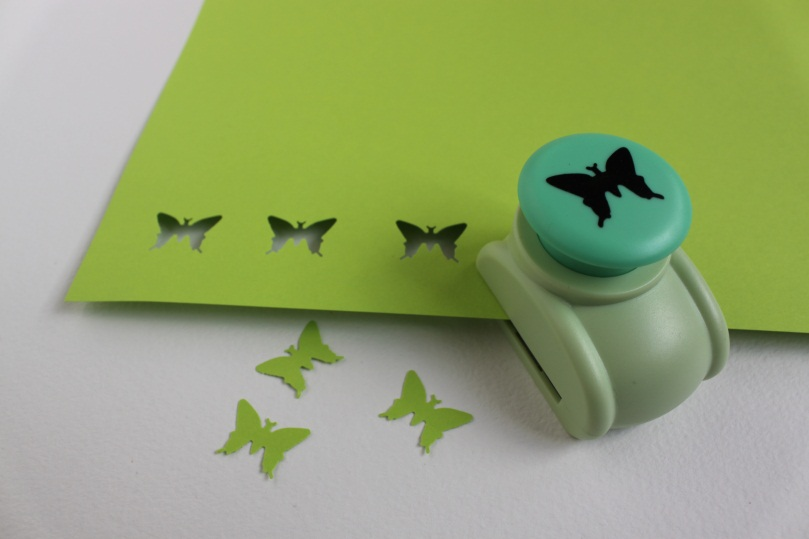 Figured puncher - Butterfly
Figured puncher - Butterfly - Figured scissors will make the edge of an interesting shape, observing a certain pattern. They are also many different types, so to speak, for every taste
 Figured scissors
Figured scissors - Rubber adhesive is very convenient for application, becauseif the part is not glued properly, before the glue has dried, you can gently remove it and stick it to another place. Also, the traces of the glue are easily removed by the usual eraser. The only drawback of this glue is its smell, therefore it is better not to use it with the kids
- For small children it is possible to purchase glue stick .It practically does not deform the paper, however the marks from it still remain
- The glue with the brush will be very convenient to use for the kids, because they are very interested in dipping the brush in the jar and applying glue to the
element. Additional materials and techniques for the application
To make the applicationspecial and interesting, you can use other materials.
- Raisins will give, for example, such a detail as artificial plastic eyes in the little creature that will move when the position of the picture changes
- Small parts in the work do not have to be cut, they can be drawn with a felt pen or pencil
- The acrylic contour will help you to select the necessary elements of the
- In the application you can usebeads and lace of paper, these materials will make the work interesting and unusual
- You can insert the hand-made article into a frame, if it turned out very beautiful, it is dear to you as a memorys or for a gift made
 paper lace
paper lace Ideas applique circles
unusual idea application - use only cut circles out of paper. If you make all the details from the circles, you will get a very interesting and unusual work.
A child will like this lesson, especially if he sees how simple circles of different sizes turn into a cute cat or bird.
 Owl and small fish
Owl and small fish  Crocodile
Crocodile  Ladybug and penguin
Ladybug and penguin  Birds
Birds Ideas for applique from napkins
You can use even the most common wipes for appliqués. They come in different colors, although their choice is not great, as a rule, they are basic colors and a few additional shades. This technique is very simple and it can be done even with three-year-olds.
 Diagram of application from napkins
Diagram of application from napkins Application using napkin balls is a very fun activity for children. This technique well stimulates the development of fine motor skills, becauserolling balls is very laborious work.
It's quite simple to make such an article:
- prepare the drawing, apply it to the
- base. The details of the drawing should not be small; you need enough space for sticking the
- balls. You need PVA glue and
- scissors. Prepare multi-colored wipes.
- . Select the frame to fitready work
Napkins can be replaced with corrugated paper, but this is not necessary, becausesuch napkins you will find in any store. The only than corrugated paper is better, this is a great variety of colors.
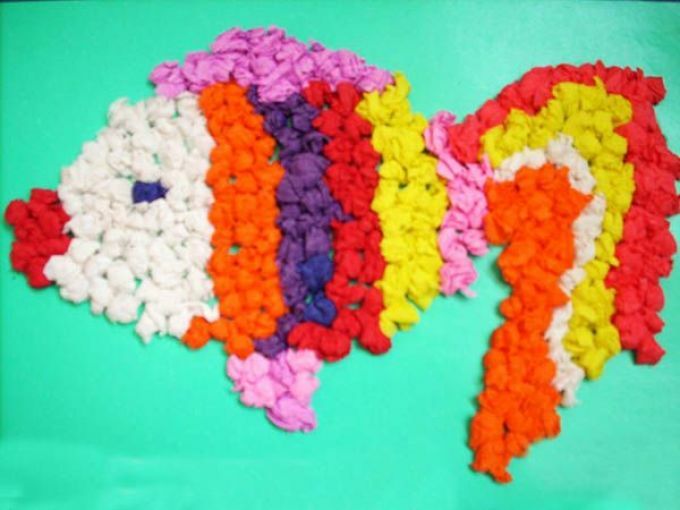 Fish
Fish Drawing can not be applied to cardboard, but printed on the printer and glued to the substrate. While it will dry, you need to prepare colorful balls.
To do this, cut the napkins or corrugated paper into squares of the same size and roll the balls out of them. Balls for this work will need a lot, and their number will also depend on the size of the picture and the size of the balls themselves.
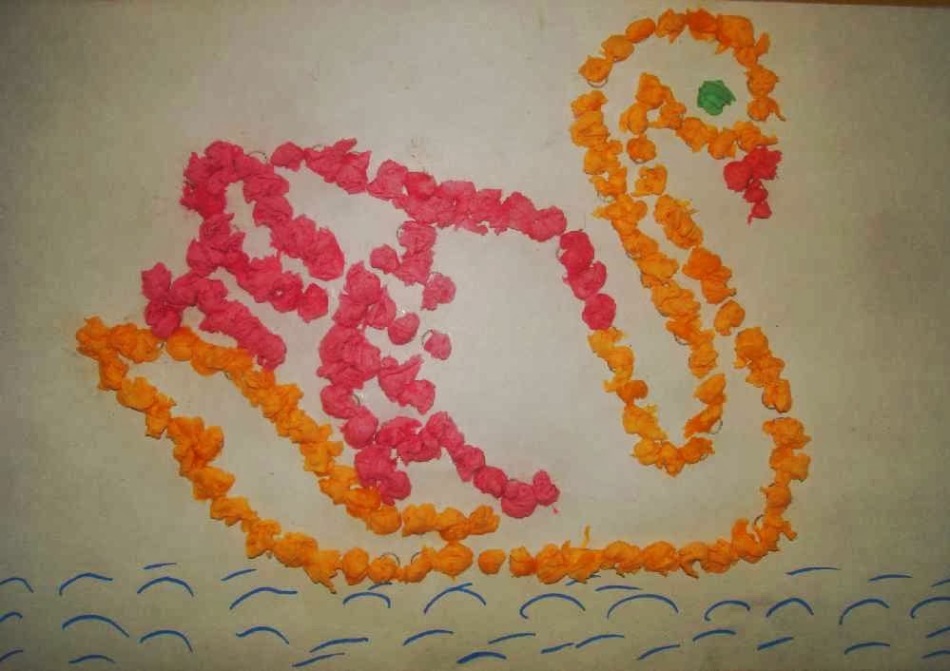 Swan
Swan Use a glue of PVA wipes to paste on the picture, some details can be drawn with a marker or a felt-tip pen, it all depends on your imagination and the desire of the young master.
The work background can also be made from balls of the right color.
 Make-it-yourself by February 23
Make-it-yourself by February 23 Make the frame work and decorate it with a room or other room in the house or in the kindergarten. Such a picture will also be a good gift for relatives and close people, for example, on a holiday on February 23 or March 8.
Ideas for appliqués from buttons
All children love buttons. Probably, every child more than once found my mother's box with them and made order in her, chose the ones she liked. Therefore, the appliqué with buttons will be of interest to any child.
 Tree from buttons
Tree from buttons Since two years old the kid can already make a simple picture, having pasted on a basis buttons in the form of a flower or a butterfly.
With older children, you can make a stand under the hot, pasting buttons on the skin or a piece of felt.
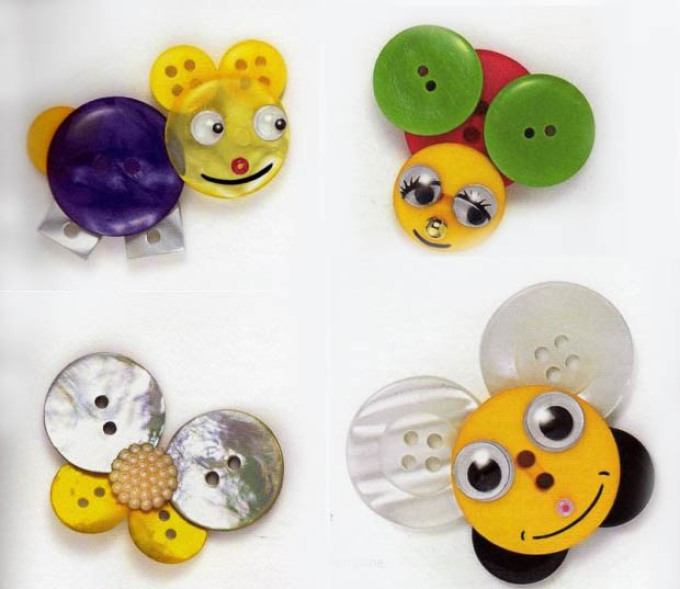 Buttons from buttons
Buttons from buttons With older children, buttons can be glued to glue, but when working with small ones, it is better to glue two-sided adhesive tape to the buttons. If there are many of them and there is no opportunity to glue on each scotch, you can paste plasticine on the cardboard, and already press buttons on it. Cardboard is better to use glossy, becauseon the matte stains from plasticine can come through.
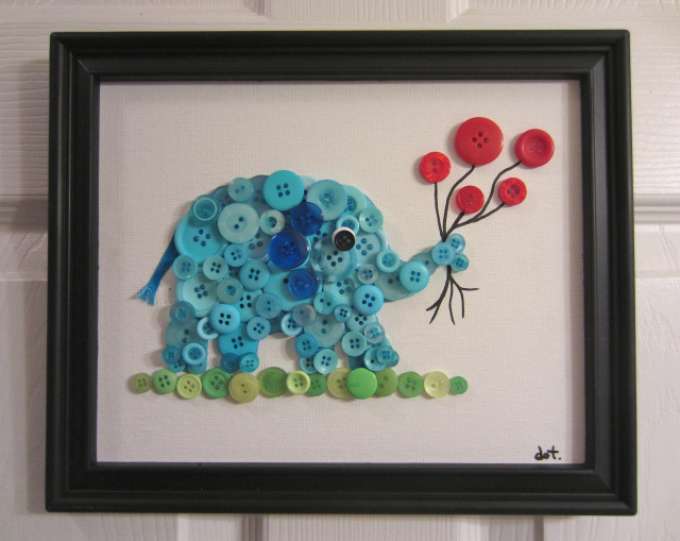 Elephant of buttons
Elephant of buttons 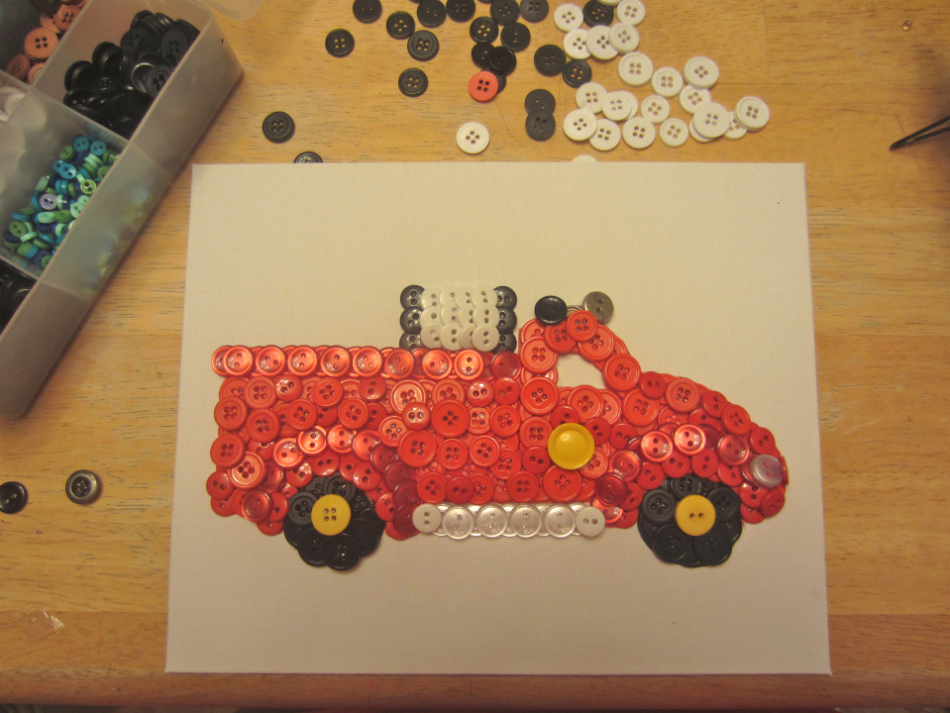 Machine
Machine  Picture of buttons
Picture of buttons Ideas of application of cereals
Groats can be successfully applied not only in the kitchen, but also in creativity. From cereals, wonderful and unusual paintings and hand-made articles are obtained.
As with napkins, you will need a picture-base. This can be any image, drawn, printed or cut from the coloring. The main thing is that in the picture there were no small details, then its elements can easily be covered with various groats.
 Chicken from the spoon
Chicken from the spoon - Apply a brush to the picture using a brush. If you use different cereals, do not apply glue immediately to the entire drawing.
- Apply one piece of glue first to the glue and let the child fill the croup with it. Fingers can be slightly pressed down to the base. All that is not glued, shake it back into the
- plate. If there are several elements, apply glue on them and sprinkle the groats one at a time - this will help to make the work of the neat
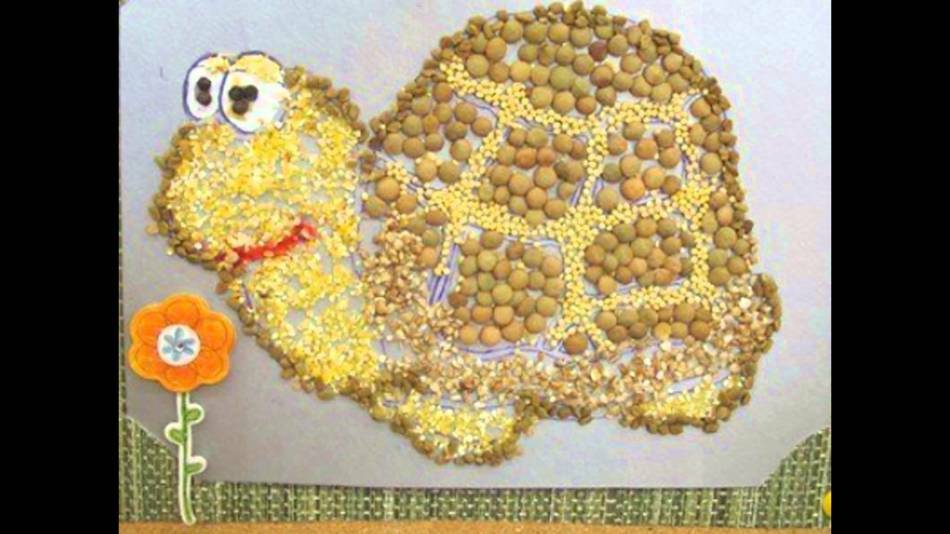 . The Turtle
. The Turtle Croup can be used in a variety of colors, and even it can be dyed in different colors with gouache. And it's very simple to do this:
- dilute gouache with a little water
- paint the rump with a brush
- place on a bag or clerical file in one layer
- let it dry
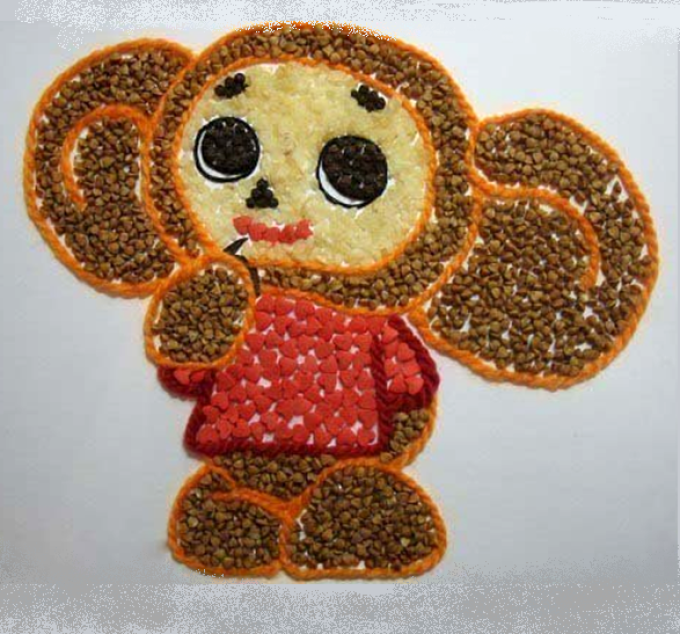 Cheburashka
Cheburashka The second method is suitable if you need to paint a lot of cereals, and it's good that the colored grainsDo not get your hands dirty when working with them:
- put a groat into the bowl, fit the rice
- well, fill it with water and add gouache so that it turns out bright saturated color.
- . Leave to stand for 12 hours.
- pour intody and dry in a single layer of giraffe
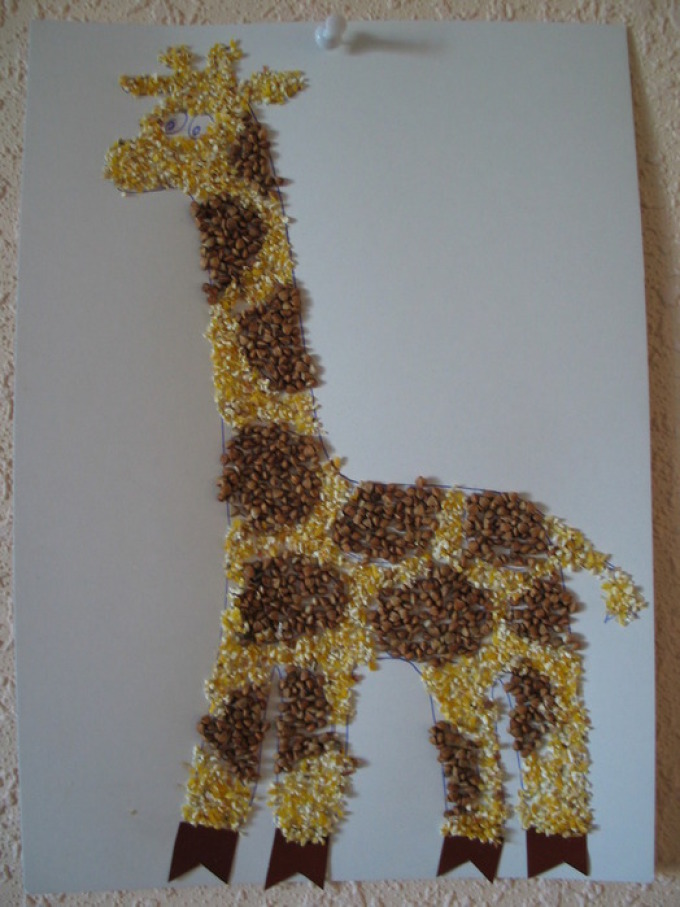
Applications of natural material
Autumn gives us a lot of natural material, which can be used in various artefacts. From simple leaves, which are lying on the streets, you can do a lot of interesting things, including applications. From them we get funny little men, different animals, landscapes and even plot pictures.
Collecting material for applications is also very fun and simple, because you can find leaflets walking in the park.
 Owl made of cones
Owl made of cones You can make a hedgehog from a maple leaf, from a birch of fishes, and oak leaves remind a tree.
Some details of the work can be finished with felt-tip pens or paints.
 Butterfly from leaves
Butterfly from leaves You can cut out the desired parts from leaflets, i.e. Use not a whole leaf, but a cut-out element. Use leaves of different colors.
You can pre-dry the leaves or put in a book for a little while, so that they align. You can also dry them by ironing them through a sheet of paper.
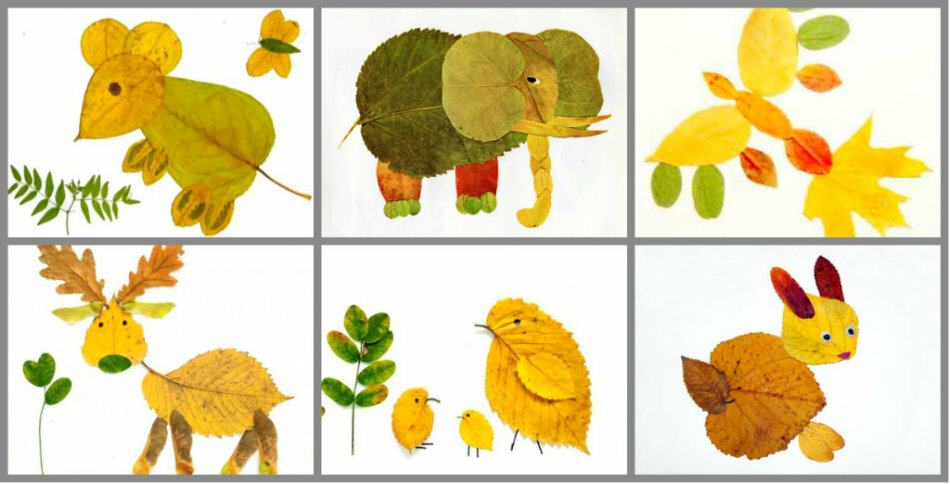 Different animals from leaflets
Different animals from leaflets Dry leaves can be crumbled into a crumb and sprinkled with a substrate on which the glue is applied. After that, shake off the remaining crumbs. This lesson will be very pleasant for younger children.
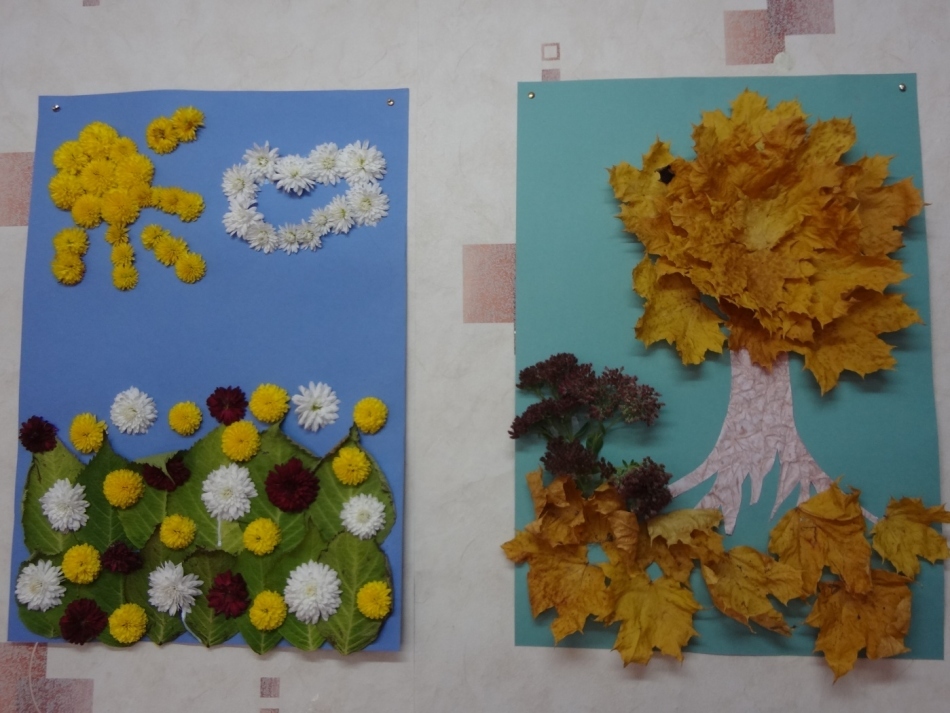 Pictures from natural material
Pictures from natural material 